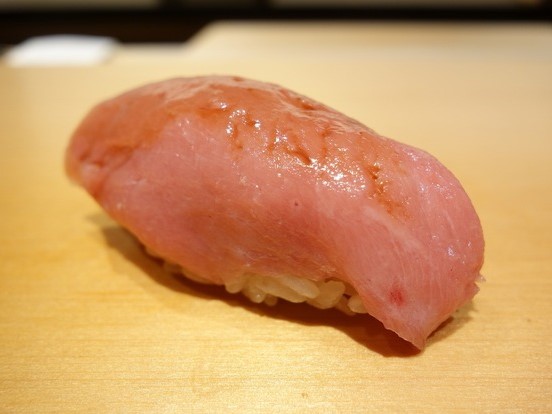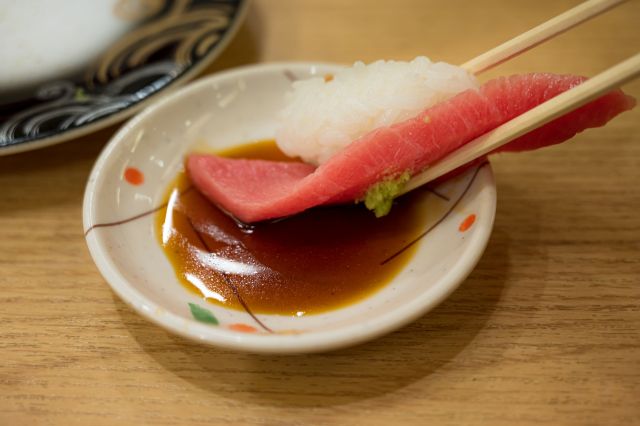
Soy sauce is more than just a condiment for sushi—when used properly, it enhances the flavor of the sushi topping and brings out a perfect balance with the vinegared rice, which is already delicately seasoned. However, using it incorrectly can easily upset this harmony.
The most delicious way to eat sushi at restaurants where the sushi chef applies Nikiri shoyu (a soy sauce mixture perfectly evaporated with sake) for you is just the way it was prepared. However, at restaurants where sauce is not applied for you, the sushi is eaten by dipping it in soy sauce. The soy sauce used for dipping is provided for you at the counter or table. Many restaurants use the same evaporation formula for the dipping soy sauce.
Soy sauce for dipping is put into a small dish for use, but don’t put in too much. It depends on the depth of the small dish, but the diameter of the circle of soy sauce after being poured should be approximately 25mm.
When dipping sushi into the soy sauce, turning it upside down (although it will be somewhat tilted) and dipping the topping seems to be the most common method. If you keep the topping on the bottom when you put the sushi in your mouth, the flavors of the soy sauce and the fish are in complete harmony and the delicious taste spreads through your mouth. There is also an opinion that turning the sushi upside down for dipping is unacceptable practice. There are also some with the opinion that whether to eat with your hands or chopsticks depends on the situation.
Make sure not to get any soy sauce on the vinegared rice (shari). You don’t want to add unnecessary saltiness to the Shari, which has already been seasoned. It would be a terrible waste to cancel out the exquisite balance of the topping, wasabi and Shari with the saltiness of soy sauce.
Related contents: SOY SAUCE FOR SUSHI
[sc_apply url=”https://sushiuniversity.jp/apply/”]
We hope this information will be helpful.

Revision date: July 3, 2025
Share this article
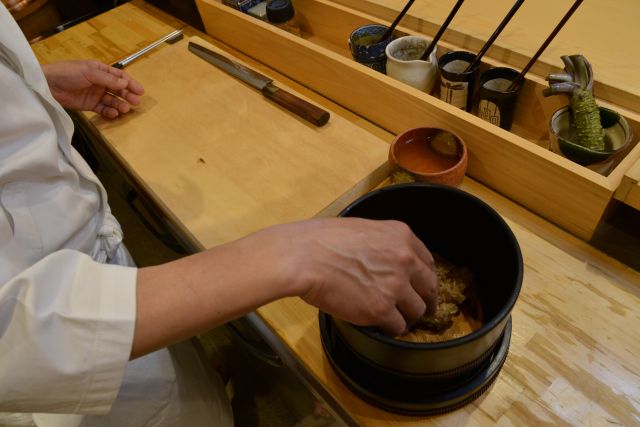
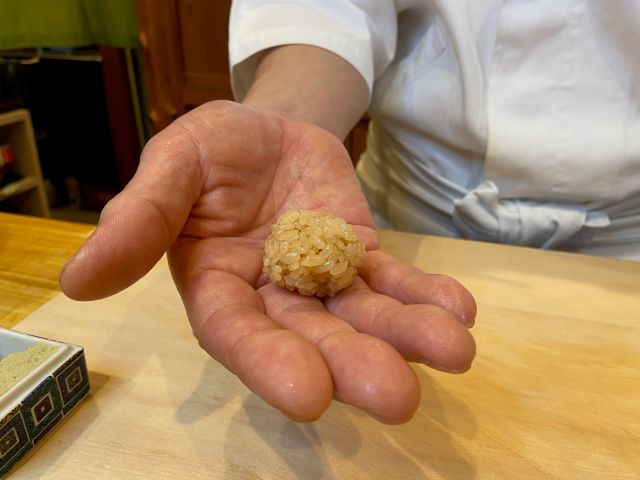
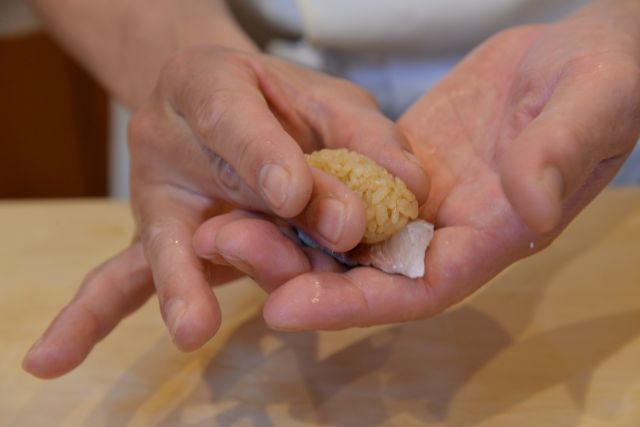
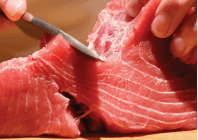 There is a part on the tuna belly called “Sunazuri (gizzards)” or “Zuri” . Normally “Jabara,” with the diagonal white lines is the king of tuna, but the fatty tuna is spoiled if the white lines are left in your mouth. Also, on the dorsal side there is a part that produces chutoro called wakaremi.
There is a part on the tuna belly called “Sunazuri (gizzards)” or “Zuri” . Normally “Jabara,” with the diagonal white lines is the king of tuna, but the fatty tuna is spoiled if the white lines are left in your mouth. Also, on the dorsal side there is a part that produces chutoro called wakaremi.